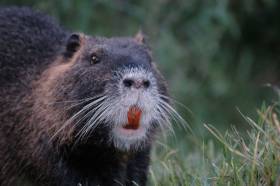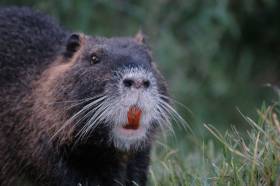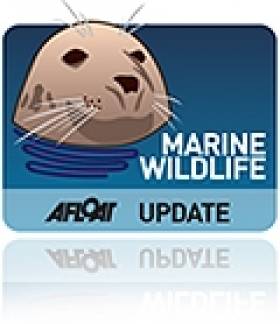Displaying items by tag: Coypu
Appeal For Sightings Of Invasive Coypu On Royal Canal In Dublin
Waterways Ireland advises all users of sightings on the Royal Canal at Ashtown of a large invasive rodent species that is highly damaging to river, lake and canal banks.
As previously reported on Afloat.ie, the coypu — also known as the nutria in the United States — is regarded as a destructive invasive species and pest, posing a threat to agriculture, the stability of river banks and even coastal defences.
The coypu is an EU-regulated species of concern with trade, transport and reproduction restrictions in place (No.1143/2014).
The large river rats can also carry a number of serious diseases communicable to humans and domestic animals.
Waterways Ireland says coypu eradication programmes can cost up to several millions of euro and are not always successful.
Most recently there were sightings of the rodents in Cork city two years ago, after a number were trapped by the National Parks and Wildlife Service (NPWS) in a tributary of the River Lee.
But their presence across the country in the capital raises concerns about their further spread throughout Ireland’s inland waterways.
Waterways Ireland has provided a checklist for how to spot a coypu, which are often confused with common otters:
- Large semi-aquatic rodent up to 1 meter in head to tail length. Features same in juveniles.
- It can weigh 5-9kg.
- It has webbed hind feet.
- Dark fur often with lighter ends and has a white muzzle.
- Has long cylindrical tail (not fur tail like otter) and small slightly protruding ears.
- Distinctive features are large bright orange-yellow incisor (front) teeth usually visible.
- Coypu are generally found near permanent water.
Do not attempt to engage, trap or harm these animals.
Waterways Ireland appeals for the public keep a lookout along the waterways and especially along the Royal Canal at Ashtown, and report sightings (with photos is possible) to any of the following:
- Waterways Ireland Environment Section 061-922141
- NPWS at [email protected] or your local NPWS ranger with details of location/date and a photo if available
- [email protected]
- records.biodiversityireland.ie
For more information visit species.biodiversityireland.ie.
Public Urged To Report Coypu Sightings In Cork
#MarineWildlife - Cork residents near the River Lee are urged to be report any sightings of coypu after one of the large rodents was seen in Cork city last week.
The invasive species was released within the last two years in the Curraheen River, a tributary of the Lee, with the National Parks and Wildlife Service (NPWS) trapping 10 of the large river rats since then, according to the Irish Examiner.
But the NPWS now seeks the public’s help in identifying how far beyond the Curraheen they might have spread, with possible sightings on the Cork-Bandon road, at Monkstown on Cork Harbour and in streams north of the city.
The situation is a far cry from two years ago, when fears of a coypu invasion of Ireland’s inland waterways were dismissed upon the news of a single three-foot rodent found in a Tipperary stream, as previously reported on Afloat.ie.
Also known as nutria in the United States, the rodents are regarded as a destructive invasive species and pest, posing a threat to the stability of river banks and even coastal defences.
The Irish Examiner has more on the story HERE.
South American River Rat Found In Tipperary Stream
#MarineWildlife - Rodney is the name given to a giant river rat found swimming in a Tipperary stream last week, as TheJournal.ie reports.
The three-foot rodent is a coypu, native to South America, and is the first of his kind ever found in the wild in Ireland.
After his discovering in a river in Kilnasculy, Rodney is now in the care of the Kildare Animal Foundation Wildlife Unit, whose Dan Donoher believes the animal must have been a kept as a pet before escaping or being released by its owner.
The coypu is better known as the nutria in the United States, where it is regarded as a destructive invasive species and pest, particularly in the southern Gulf Coast region.
But Dononher told RTÉ Radio 1's John Murray Show that there's no fear of a coypu invasion in Ireland's waterways just yet.

























